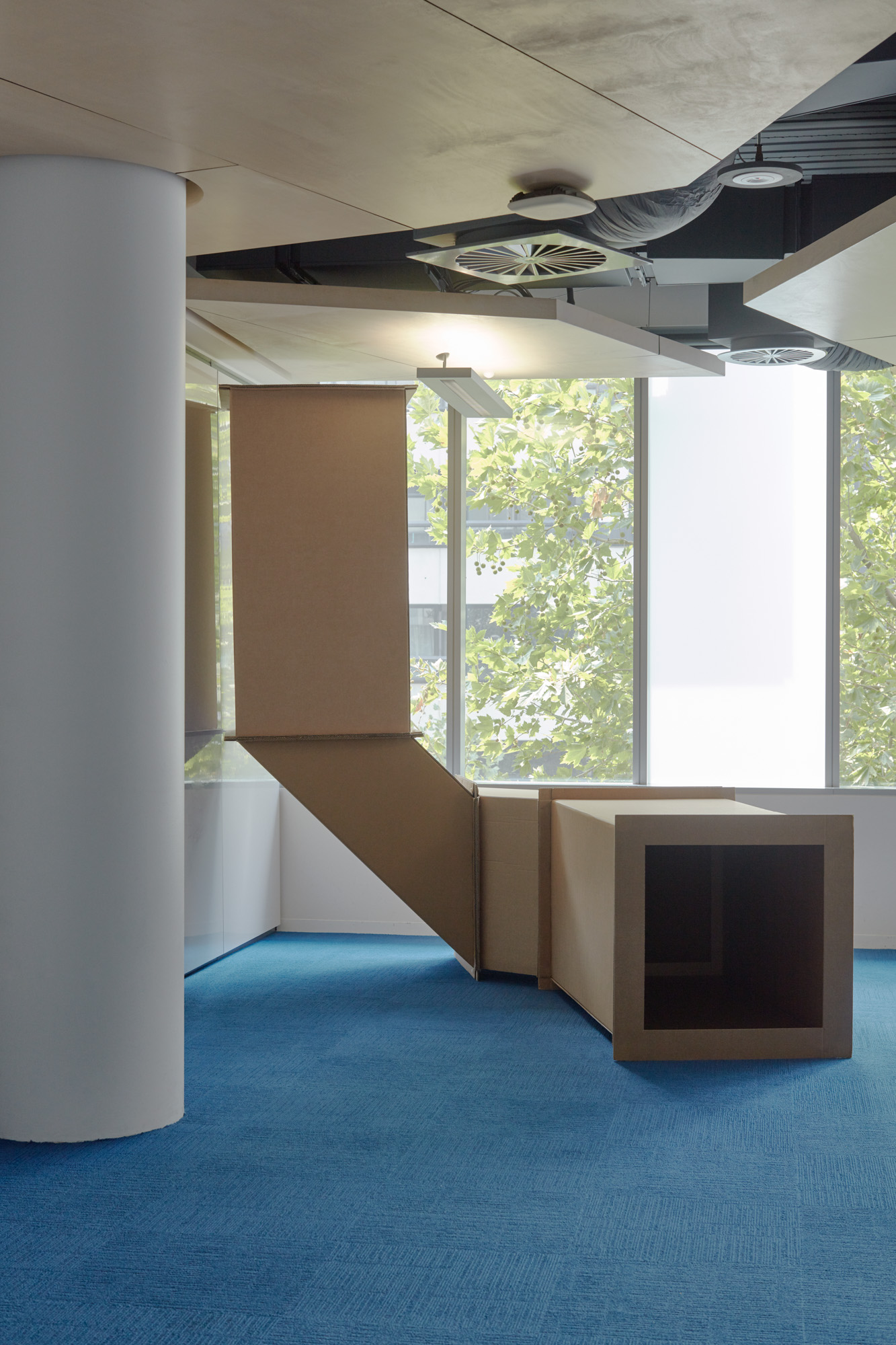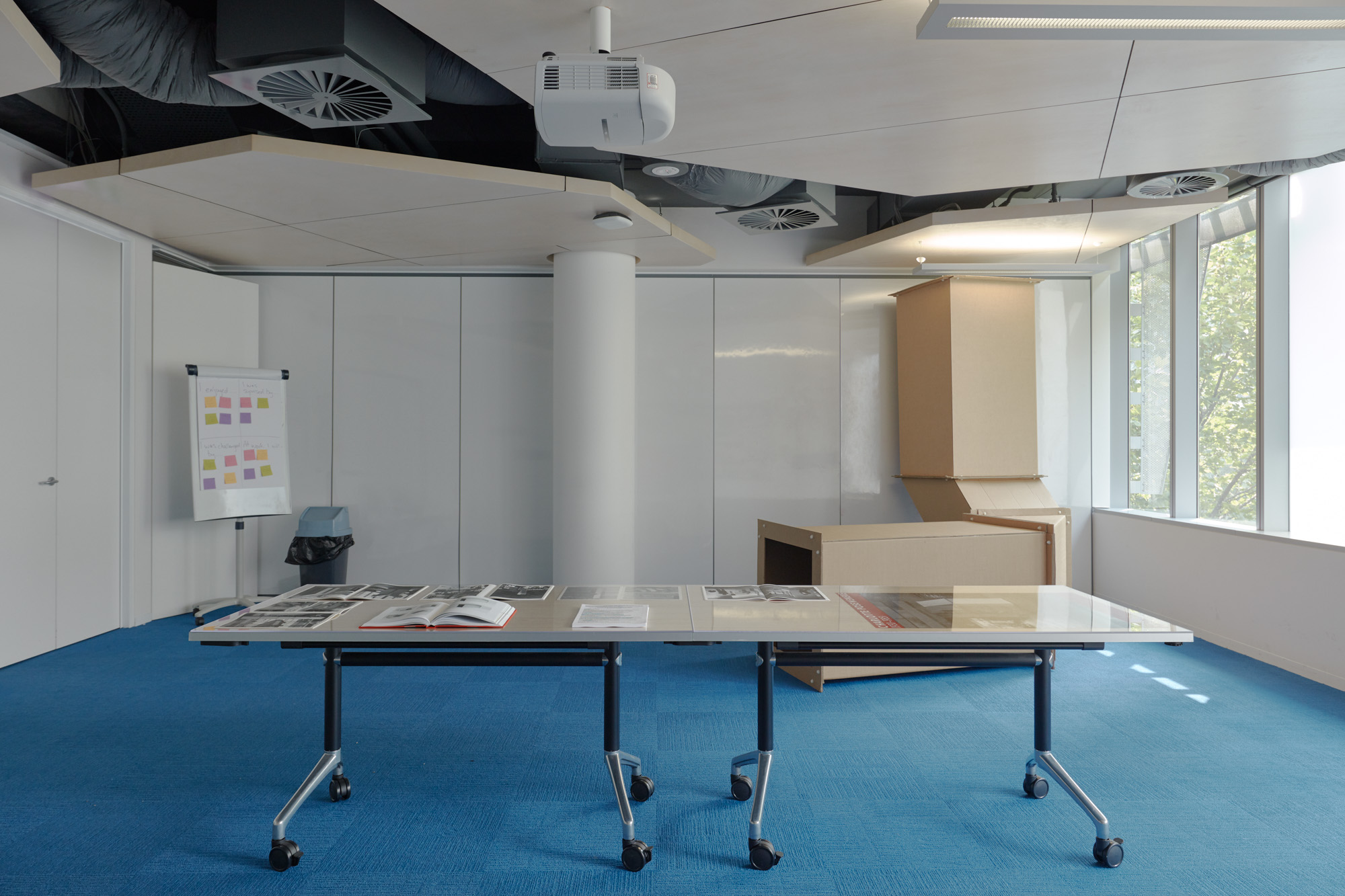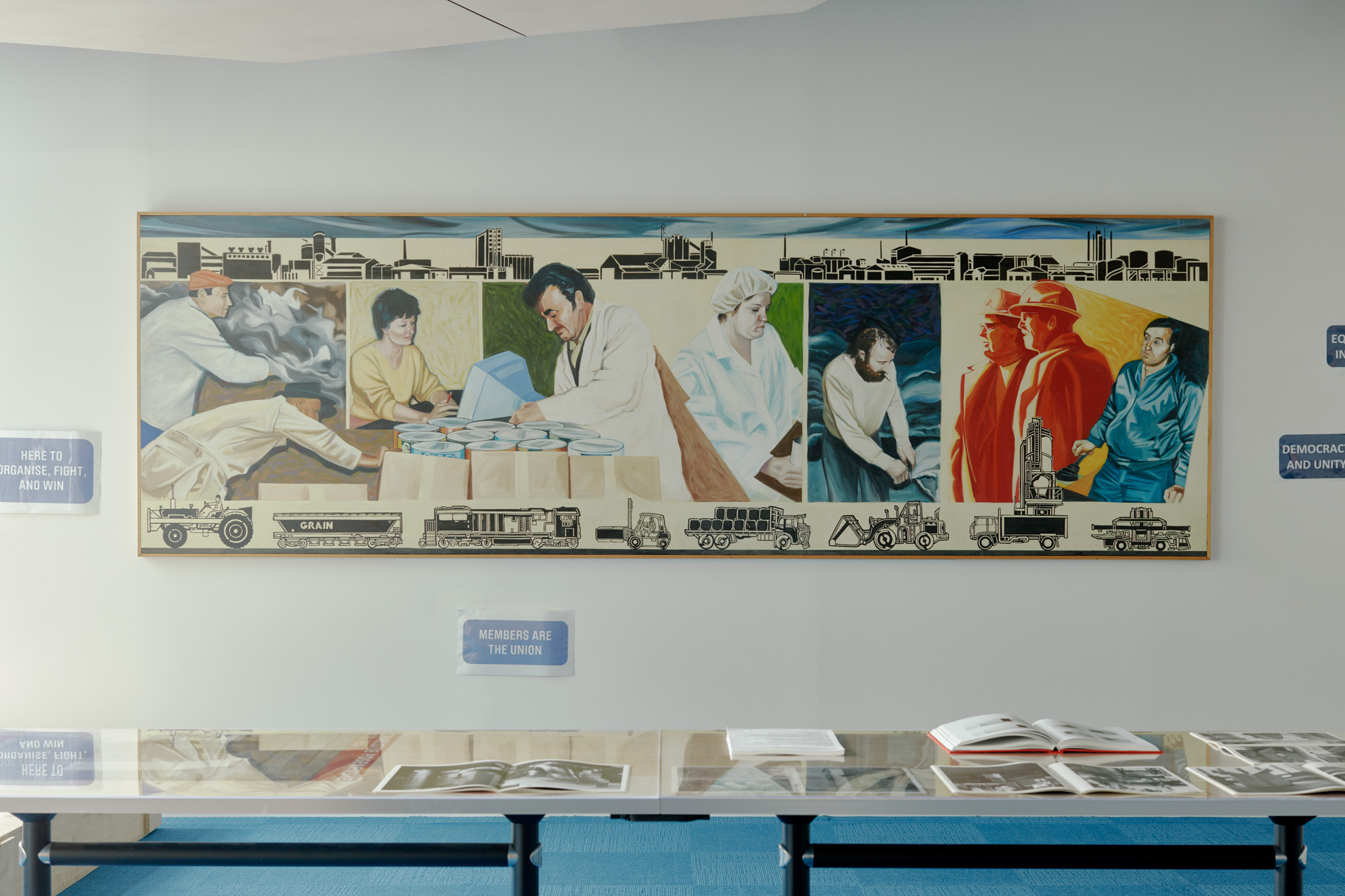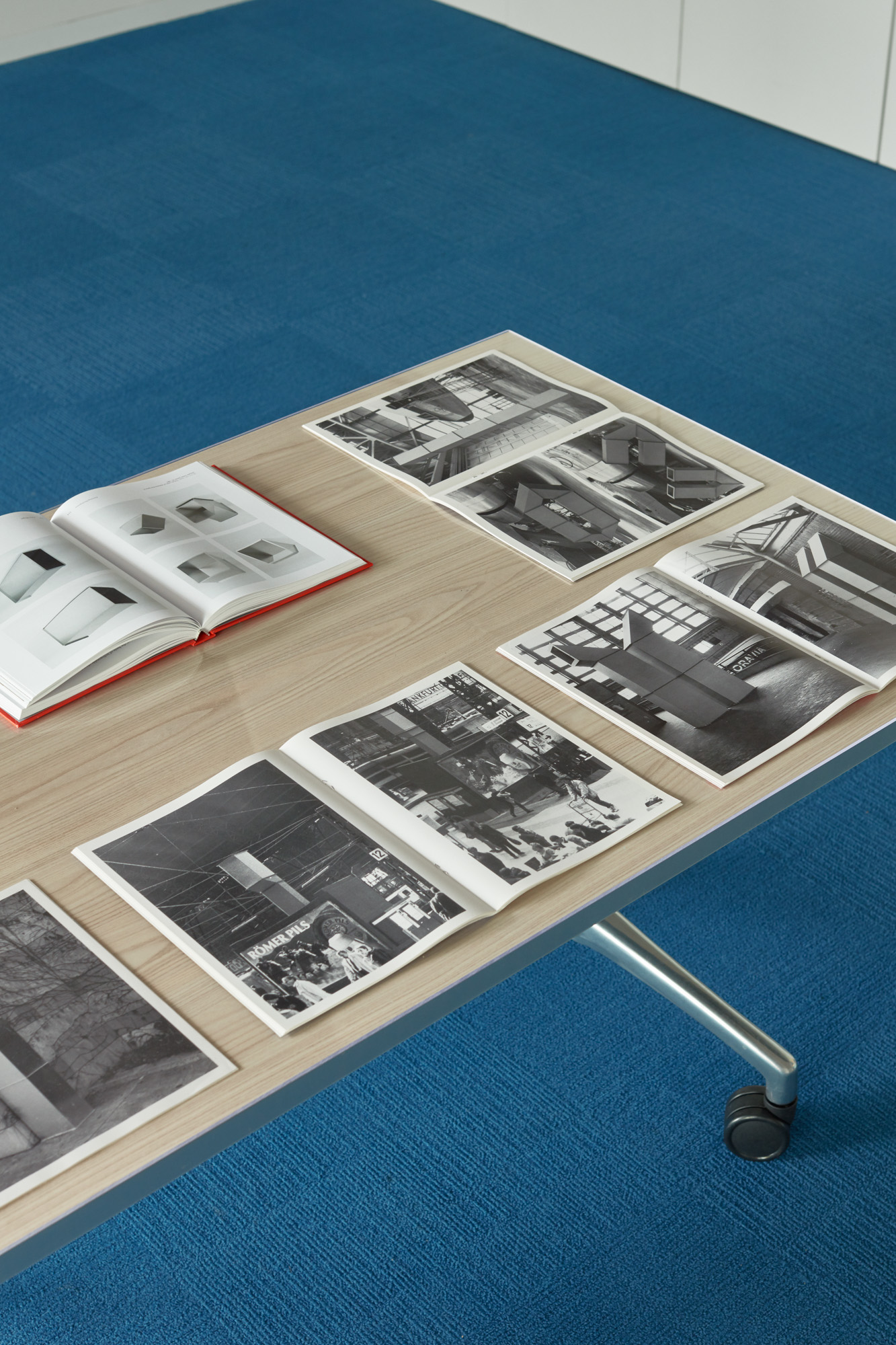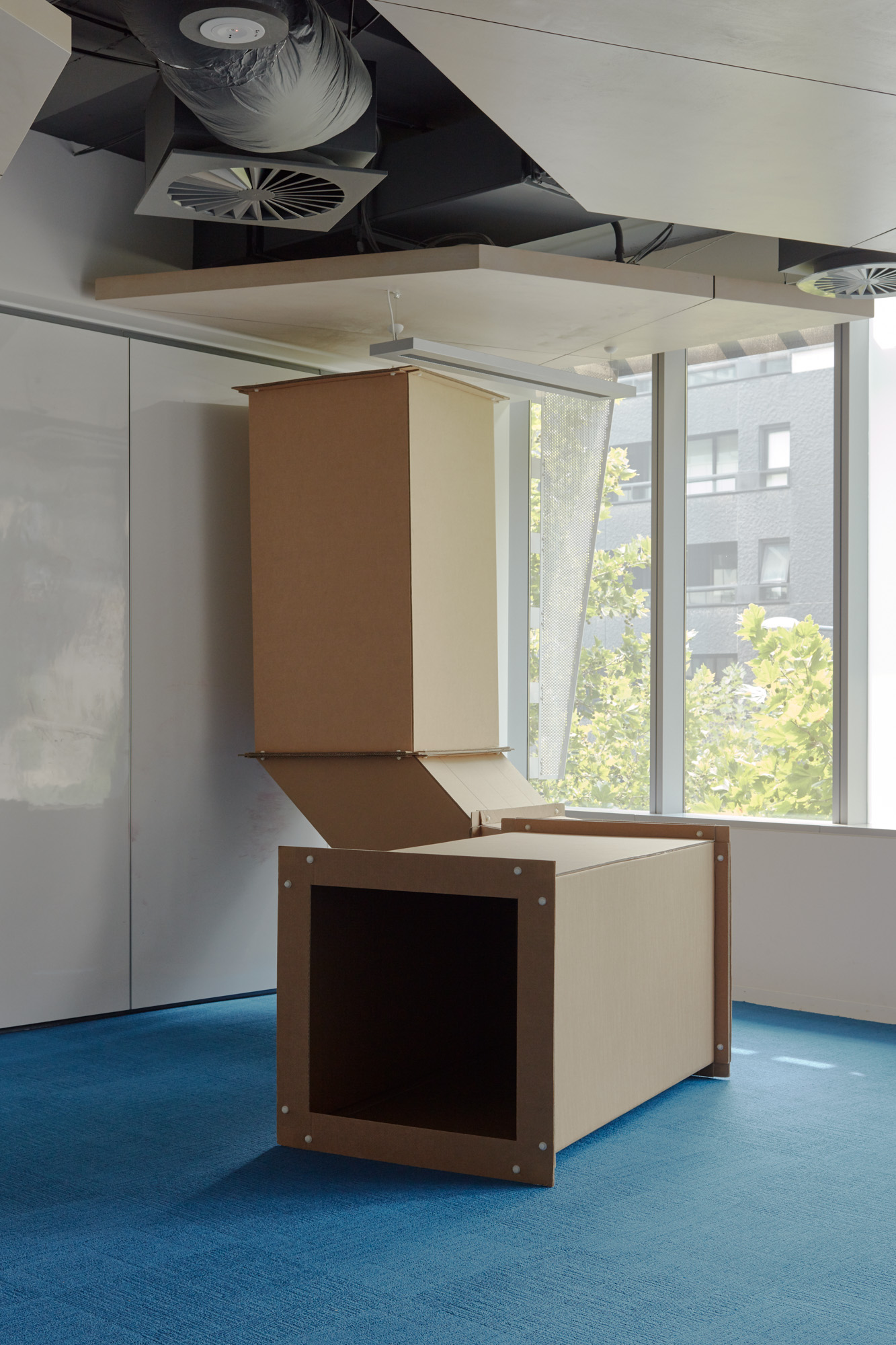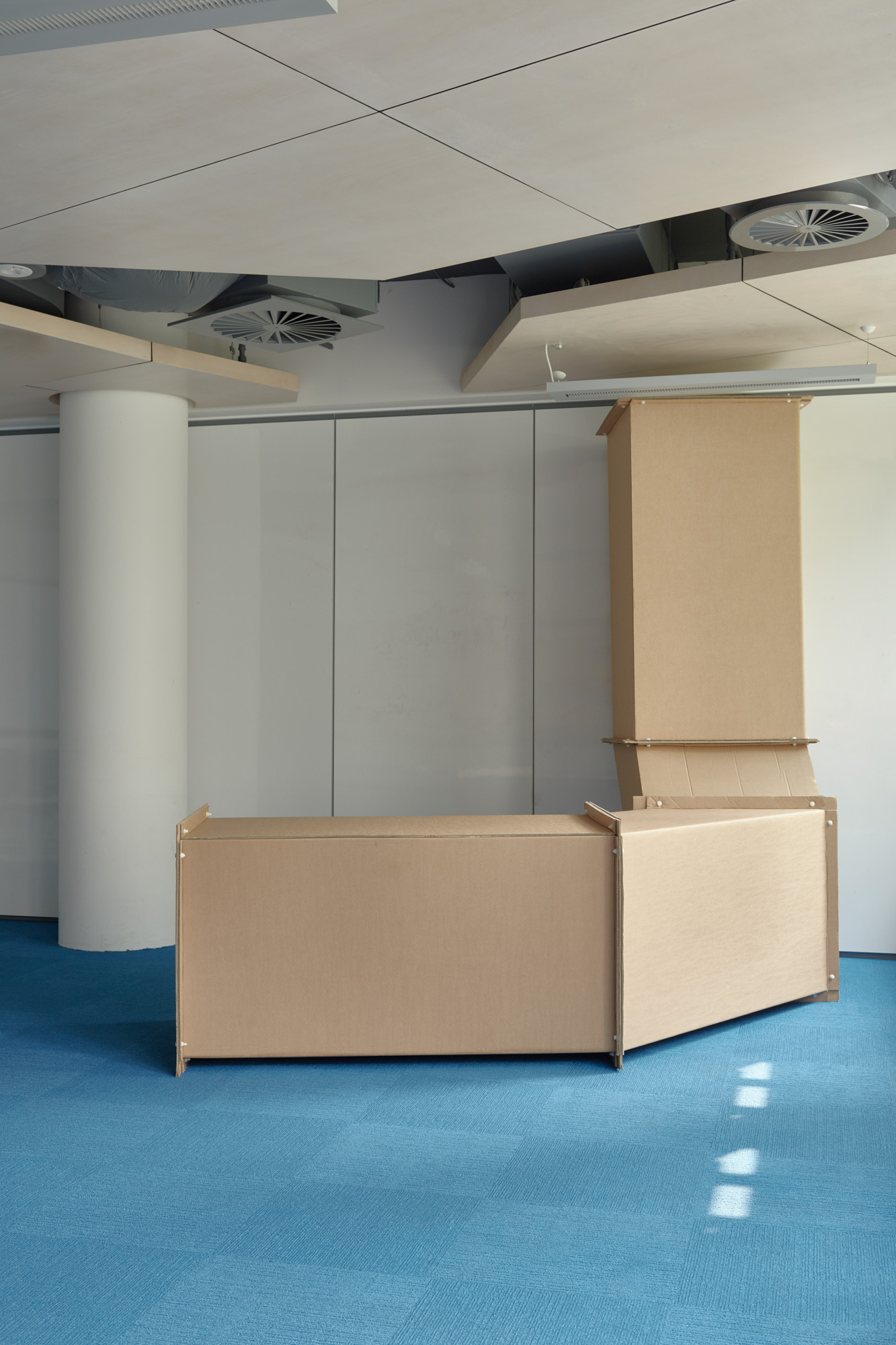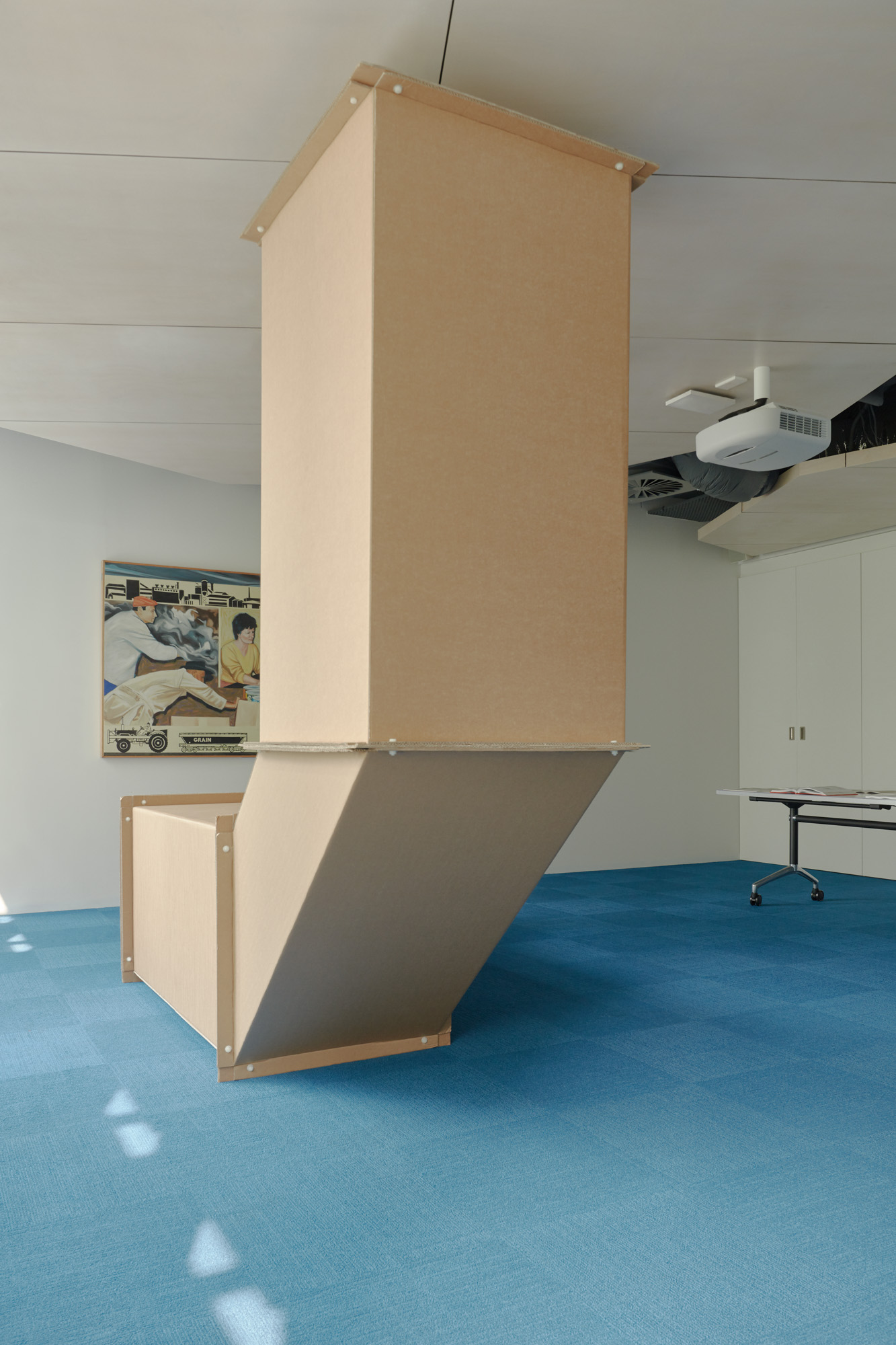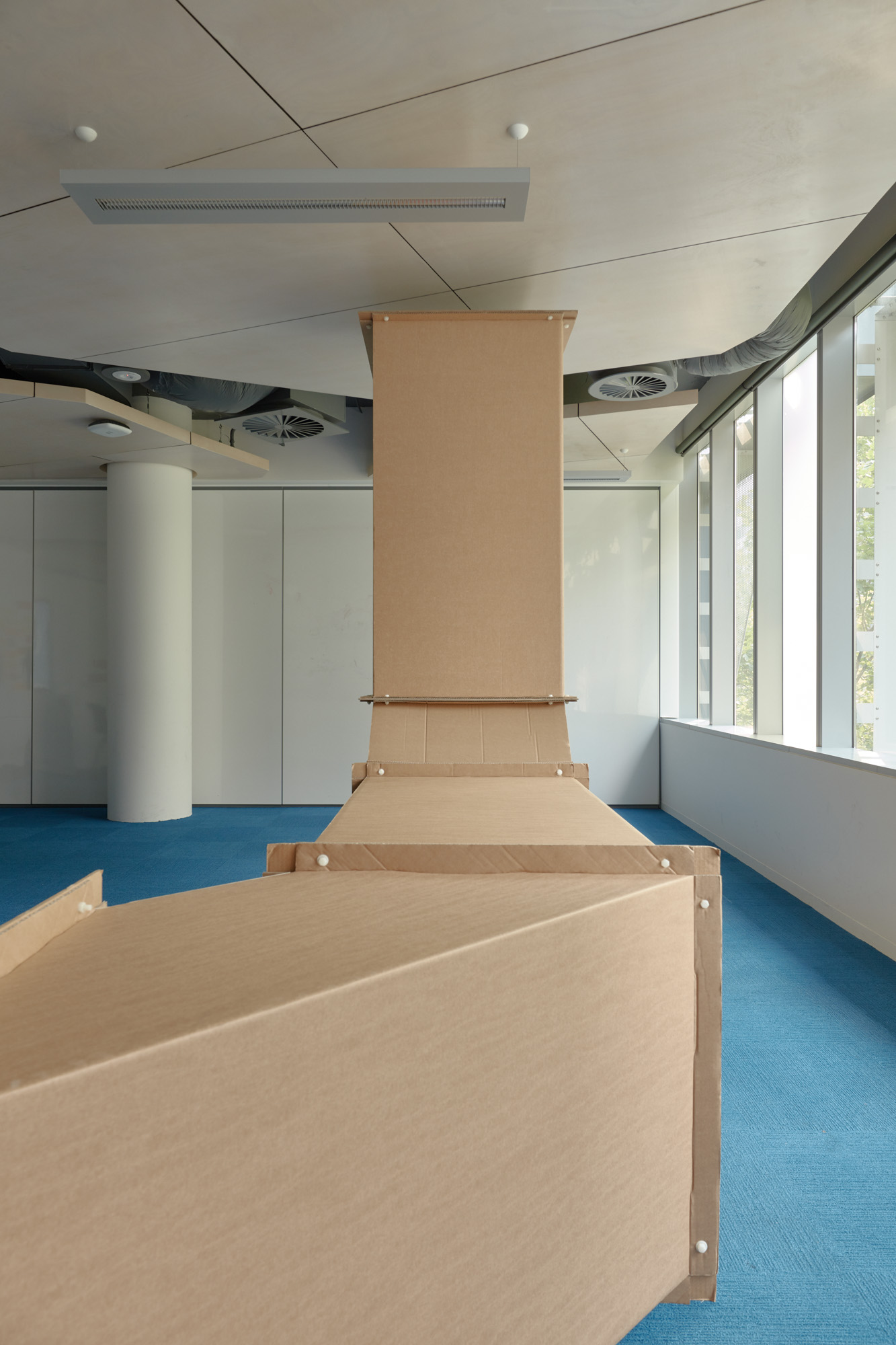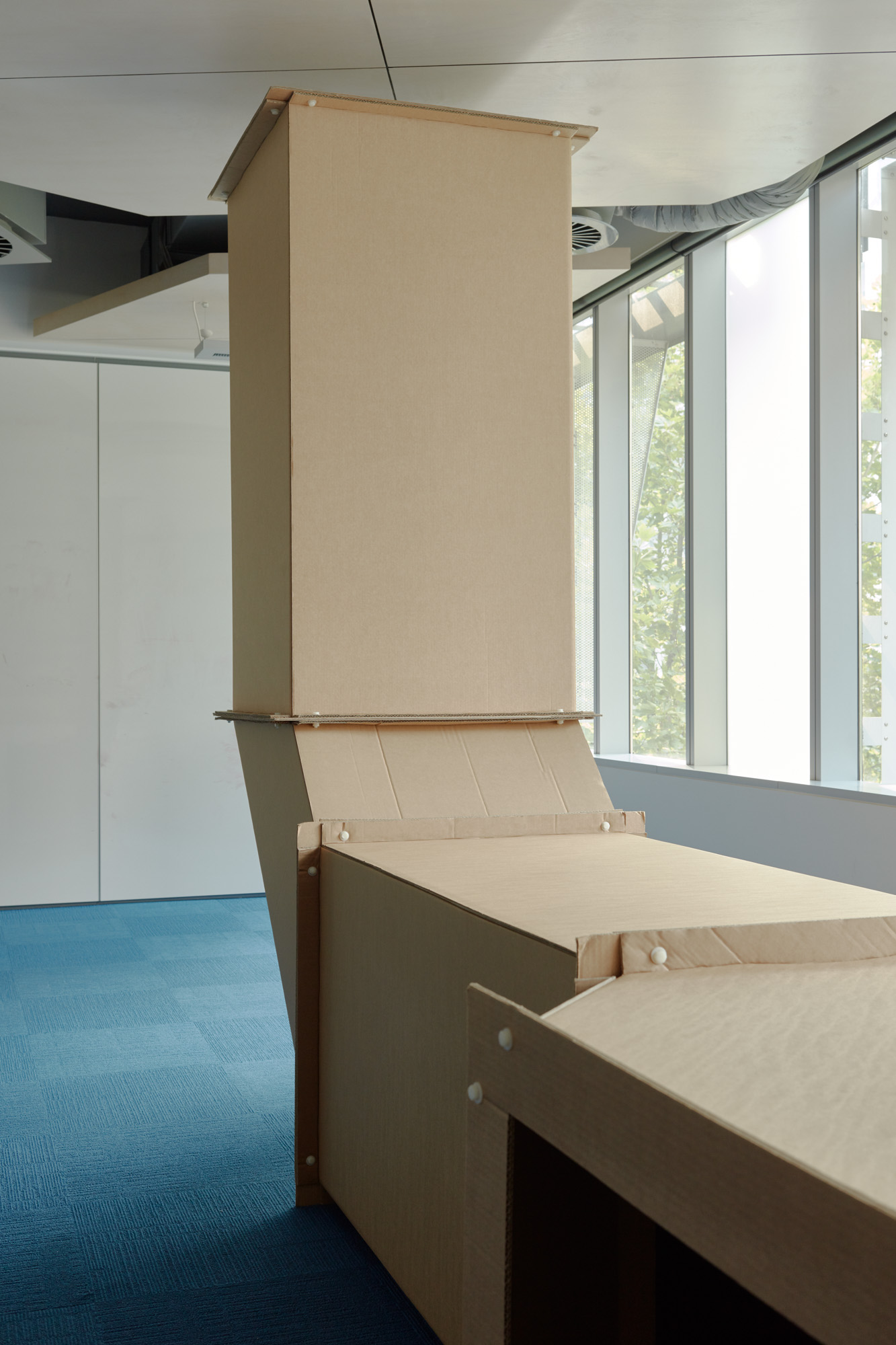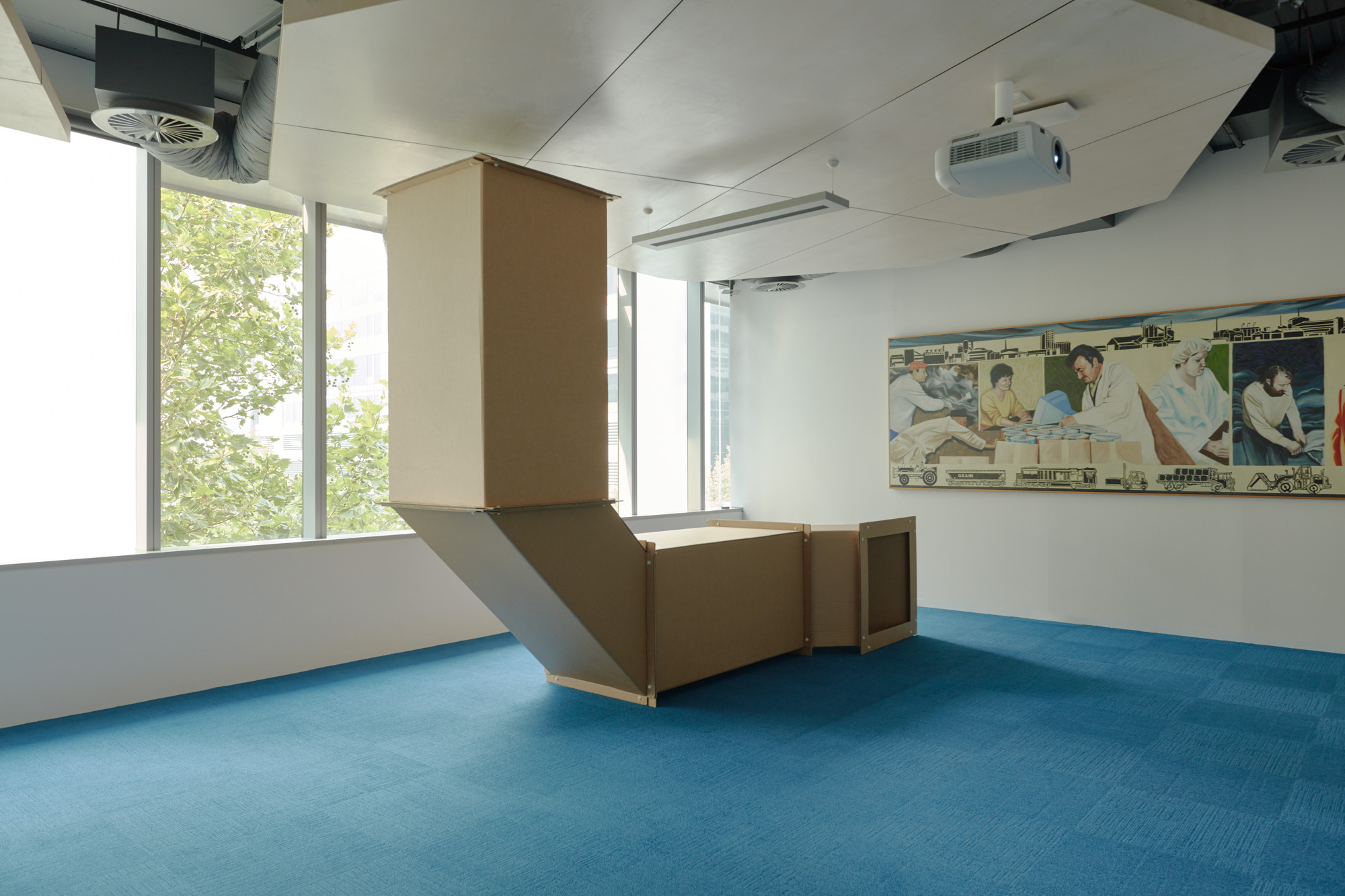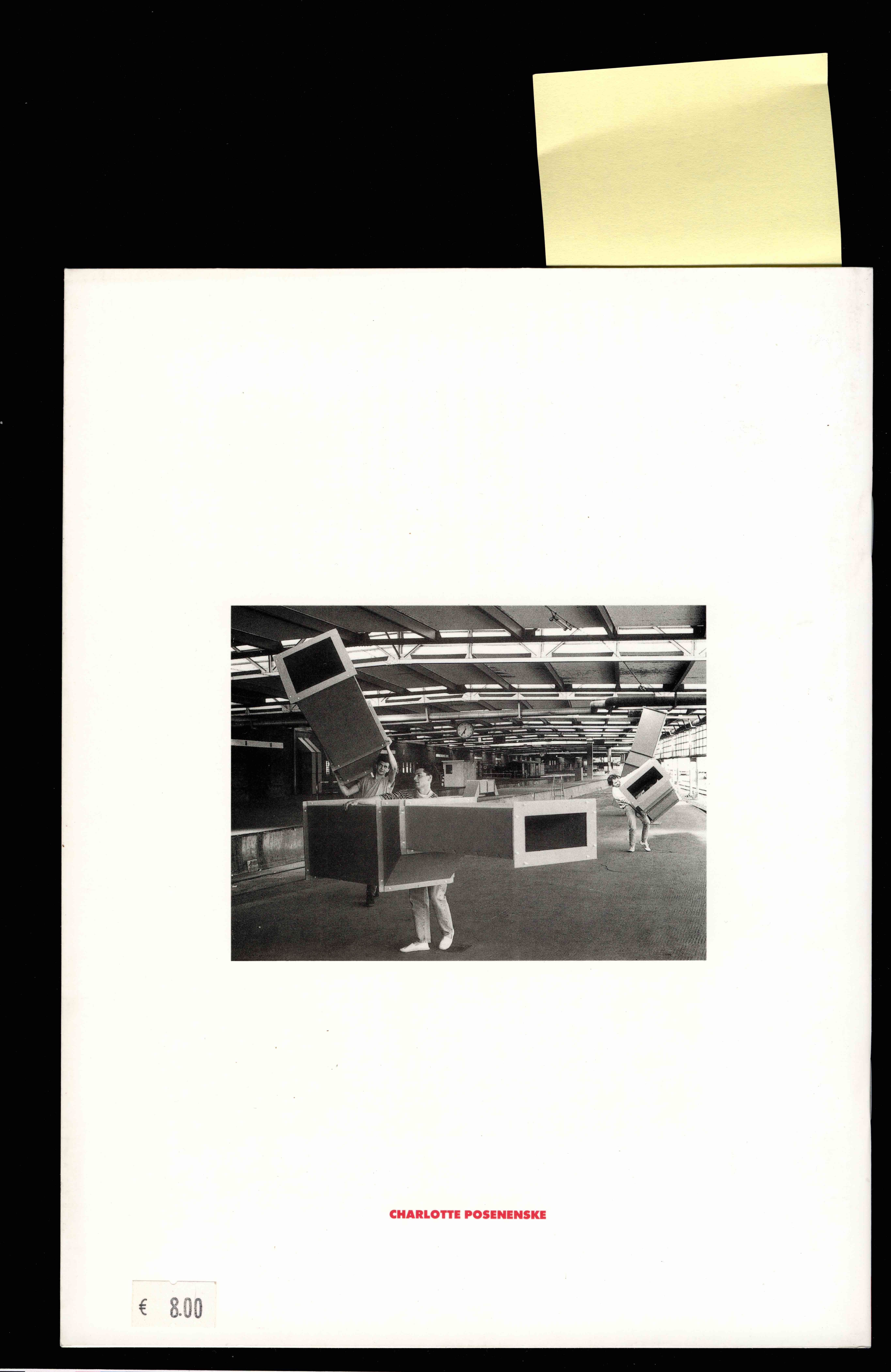
The things I make are
variable,
as simple as possible,
reproducible.
They are components of a space, since they are similar to building elements,
they can always be rearranged into new combinations or positions,
thereby they alter the space.
I leave this alteration to the consumer, who thereby again and anew
participates in the assembly process.
The simplicity of the basic geometric forms is beautiful and suited to
demonstrate the principles of rationalized modification.
I make series
because I do not want to make individual pieces for individuals,
in order to have elements combinable within a system,
in order to make something that is repeatable, objective,
and because it is economical.
The series can be prototypes for mass production.
Series DW [...] is made of corrugated cardboard, which is
lightweight and inexpensive: a material for consumption.
Often, the elements or their combinations are very large in order to
alter the spatial surroundings more thoroughly. They approximate architectural
dimensions, and for this reason also increasingly differ from
the former gallery objects.
They are less and less recognizable as “works of art.”
The objects are intended to have the objective character of industrial products.
They are not intended to represent anything other than what they are.
The former categorization of the arts no longer exists. The artist of the
future should have to work with a team of specialists in a development laboratory.
Although art’s formal development has progressed at an increasing
tempo, its social function has withered.
Art is a commodity that is only temporarily contemporary, yet the market is minute, and prestige and prices rise the less topical the supply is.
I find it difficult to come to terms with the fact that art cannot contribute to the solution of pressing social problems.
— Offenbach, Germany, February 11, 1968
(Manifesto, Charlotte Posenenske. Art International no. 5, May 1968)
- One work by Charlotte Posenenske is being exhibited in-situ in a training room at the offices of the United Workers Union. This work is from her "DW Series" (1967), a minimal set of square cardboard tubes which are collaboratively put together by participants in the context where they are exhibited.
Wednesday 18 December 6-8pm
United Workers Union
Lvl 1, 833 Bourke St, Docklands, VIC 3008
- Lecture: Amelia Winata on the life and work of Charlotte Posenenske
6pm, 14 January 2020
Organised by Nicholas Tammens with Imogen Beynon and Eloise Sweetman.
The first configuration was made by Cameron Stops, Bridget Erin Flack, Megan Berry, Jenna Christie, Kate O'Brien, Zarah and Rhodes—all union organisers at the United Workers Union.
United Workers Union is a big new union of 150,000 workers in more than 45 industries across Australia. It represents workers who provide care from cradle to grave, and across all points of production, distribution and consumption. For example, UWU represents the entire supply chain of workers that feed us—from the seasonal pickers on farms, to the workers who manufacture our food in factories, to the warehouse workers at the packing and distribution centres, all the way to the hospitality workers who plate it. The union also represents people who work in cleaning, security, early childhood education, aged care, call centres, casinos, the public sector, manufacturing and other allied industries.
Having membership across key strategic points of the economy means that UWU is well placed to take collective action within supply chains—to win decent jobs for members who’s working lives can otherwise be characterised as low paid and uncertain. What this makes certain is that without them, everything stops.
The United Workers Union is a recent merger of the National Union of Workers (NUW) and United Voice, two unions that individually have long histories of amalgamation. One of the NUW’s pre-amalgamation Unions, the Federated Storemen & Packers Union (SPU) was the union for workers who primarily picked and packed boxes of goods for distribution. This vocation was represented in the SPU’s logo–a stacked set of cardboard boxes. These standard, stacked factory boxes share an affinity with the mass-produced, serial cardboard forms in Poseneske’s work.
Charlotte Posenenske (1930-1985) was a German artist who made significant contributions to minimal and conceptual art movements before leaving art behind in 1968. Afterwards, she studied industrial sociology to pursue work with workers unions. Before Posenenske achieved her goal of working in the labor movement, she tragically died of cancer.
With her partner Burkhard Brunn, Posenenske co-authored a thesis on the sociology of factory labour titled “Time Allocation and the Value of Labour, A Critique of Method Construction: Performance Estimates, Time Allocation Systems, Analytical Labour Valuation” (Vorgabezeit und Arbeitswert: Interessenkritik an der Methodenkonstruktion:,Leistungsgradschätzen, Systeme vorbestimmter Zeiten, analytische Arbeitsbewertung, 1979). While Posenenske saw her sociological work as a “break” from her past as an artist, (1) a connection between the two phases of her life is suggested by her sociological interest in Mitbestimmung—meaning the “collaborative participation” or “codetermination” of factories, usually whereby a portion of the supervisory board of a company is composed of workers’ representatives. The radically participatory intention of works such as her "DW Series" suggests the same collective participation in realising an outcome based on the cooperative work of equal individuals.
In their thesis, Brunn & Posenenske studied how scientific management could be of practical benefit for unions in achieving better working conditions for factory workers. Their approach involved studying alternative assembly line models in Europe in the 1970s. One such model was the team assembly system of the Volvo car plant in Kalmar, Sweden. When this facility opened in 1974, it was the first automobile assembly plant to reject Henry Ford’s manufacturing techniques which became stereotypical of repetitive and dehumanising factory labour, in favour of a model of “team assembly” production more suited to the wellbeing of workers. (2) The team assembly model resulted in a decisive move away from the type degrading work promoted by Ford, in which workers were completely individualised and expendable. In the team assembly system, by contrast, workers were involved in the production of cars from beginning to end, working in a holistic manner instead of the repetitive singular tasks of assembly line work. In addition to this, their ergonomic factory environments were designed to reduce work related injury, and workers controlled their own break times—which included access to their own lounges, kitchens and saunas. While these factories are not immune to criticism, today they serve as a progressive proposition when the wellbeing of workers continues to be the subject of union organising. (3)
Although the "DW Series" was conceived just before Posenenske began her study, its reliance on collective participation was motivated by an intention synonymous with the codetermination of factory work. As workers and students in Europe pushed against state and capital repression, which was given full expression in May 68, this atmosphere of experimental thinking and the awakening of political consciousness lead artists to similar ends. While these events ultimately lead Posenenske to abandon art, the "DW Series" most cogently shows her practical deliberation with art’s formal ability to engage with our social world. While her minimalism could be read as being in stylistic antagonism with the populist intentions of pop art of that time, it has aims for mass appeal which are closer to that of the Deutscher Werkbund, the association of German industrial designers and architects who saw egalitarianism as the reason for designing practical mass producible furniture and housing.
Produced in a factory with standard corrugated cardboard and essentially mass producible as an unlimited edition, the "DW" does not fit the standard of the unique art objects which are collected as a luxury commodities. Its ideals are strongest when it is in the process of being put together, where its form is determined by its makers. There are simple rules to this game, which are close to children’s games or team building exercises.
Charlotte Posenenske was born in Wiesbaden, Germany, in 1930. She died in Frankfurt in 1985. This year her work was the subject of a major retrospective at Dia: Beacon, New York; which coincided with Charlotte Posenenske: Lexicon of Infinite Movement, curated by Eloise Sweetman and Suzanne Wallinga at the Kröller-Müller Museum, in the Netherlands. Her work is widely collected by museums and private collections internationally, and has been subject to even more numerous exhibitions in recent years.
(1) In email from Burkhard Brunn, with Eloise Sweetman and Nicholas Tammens
(2) From “Chronology” in Charlotte Posenenske: Work in Progress (New York: Dia Art Foundation; London: Koenig Books, 2019).
(3) For critical perspectives on this model, see Åke Sandberg, Enriching Production: Perspectives on Volvo’s Uddevalla plant as an alternative to lean production (Stockholm: National institute for working life / Arbetslivsinstitutet, Sweden, Department of Sociology, Stockholm University) https://mpra.ub.uni-muenchen.de/10785/1/
